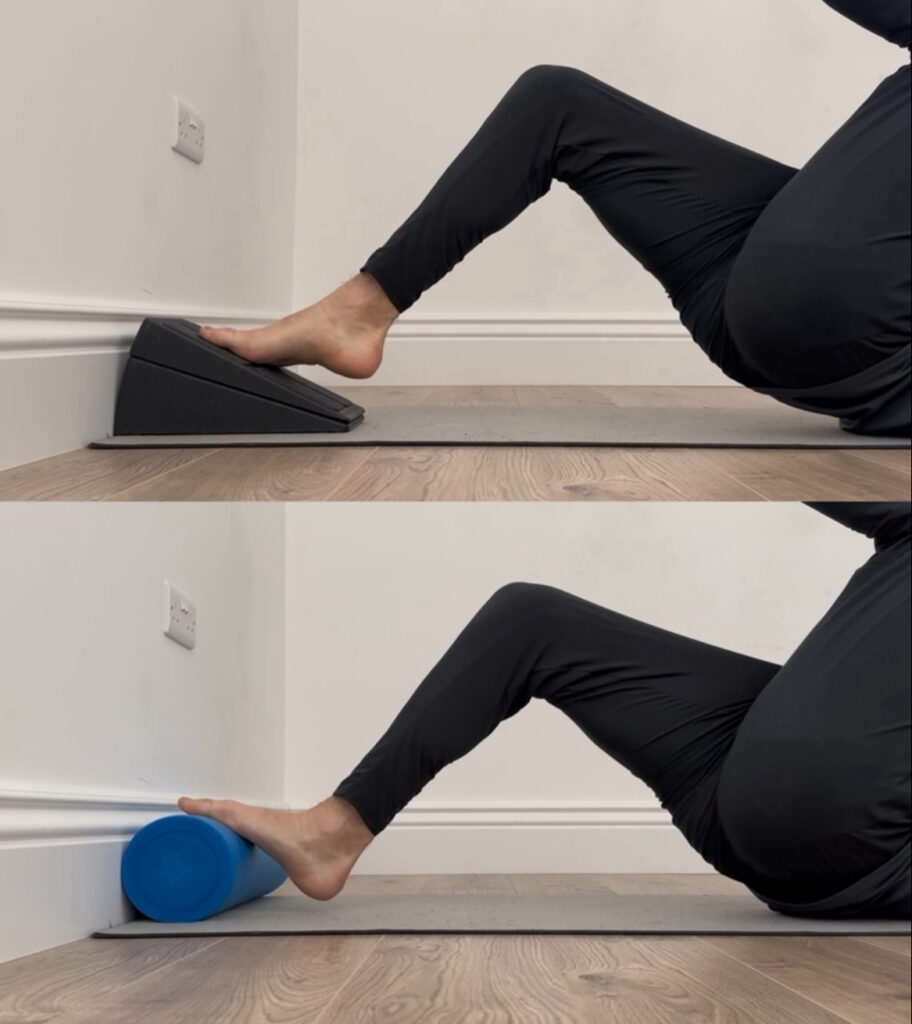
Supinated & Pronated Forefoot Bridges
Forefoot bridging strategies integrate a plantar flexion component to traditional pelvic bridging strategies that are typically loaded via the heel.
There are many reasons to integrate the foot & ankle segment more, with one of them being to encourage greater load sharing across the entire lower limb.
But, not all ankle plantar flexion is the same!
The foot can bias more of a supinated behaviour or more of a pronated behaviour during ankle plantar flexion, and this can be integrated into these forefoot bridging strategies based on the unique client and their unique limitations.
Supinated forefoot bridge
In the image shown, you can see how the use of a wedge allows the big toe to remain extended as we drive load through the metatarsal head to bridge the pelvis from the ground.
As we’ve discussed before in previous blogs, this big toe extension allows the 1st metatarsal to plantar flex which helps to facilitate greater foot supination.
At the ankle, we also want to encourage greater plantar flexion range of motion too to further facilitate that foot supination.
Pronated forefoot bridge
Using a foam roller, we can influence how the metatarsal heads & toes will interact with each other.
Because of the rounded surface, this will encourage more of a lifting of the metatarsal which represents metatarsal dorsiflexion. This helps the toes to flex and the foot to bias more of a pronated behaviour. 
We can also bias the ankle towards more dorsiflexion here which can help to further facilitate foot pronation. Manipulating foot behaviour during these bridging strategies can be a great way to challenge the distribution of load across the entire limb, and being more specific with foot behaviour is important when working with local foot & ankle limitations.
